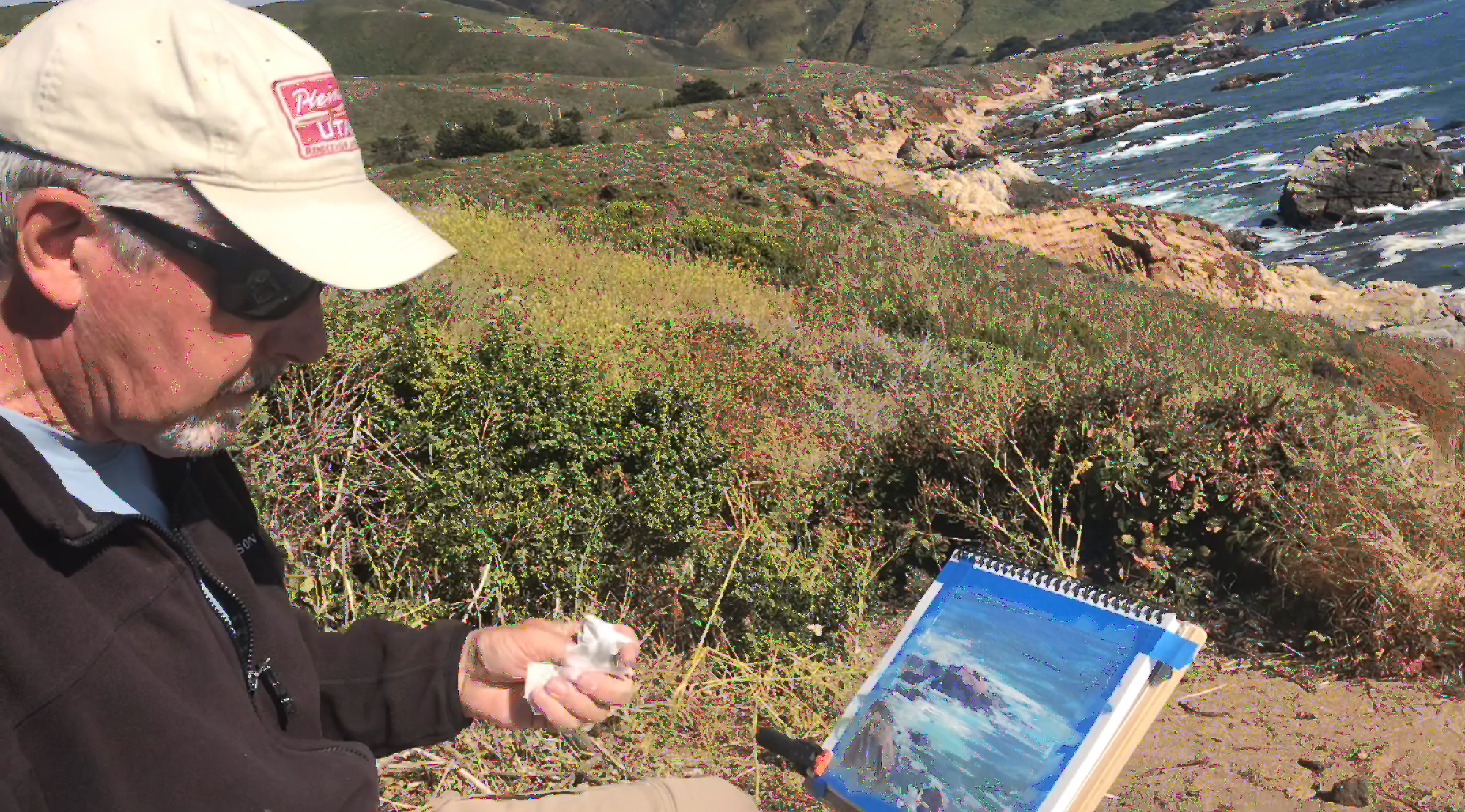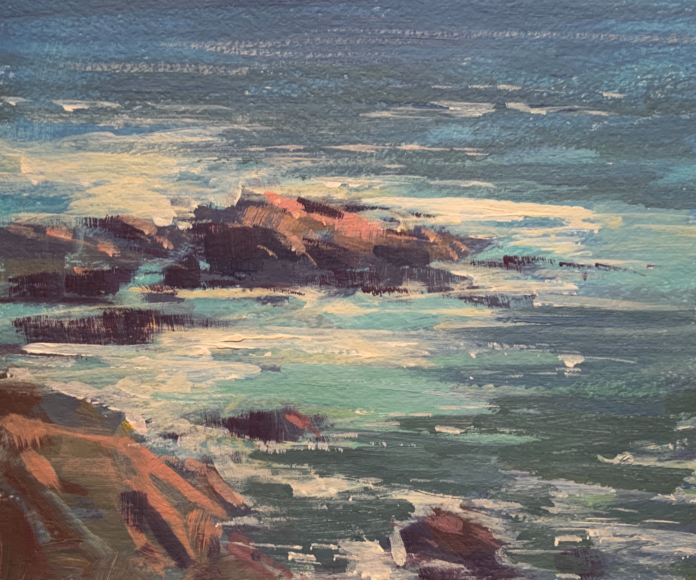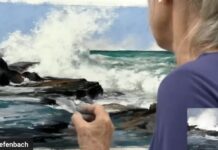On Painting Composition > What makes a painting boring versus dynamic? John Hughes shares his list of things to help you understand the underlying principles behind the pesky rules.
Simplifying Composition and Design Rules (through the use of Principles)
This is an important subject that deserves intensive study on the part of any artist who seeks to create compelling landscapes and seascapes. While this subject has already been exhaustively dissected, my purpose here is not to re-walk the same ground with a large list of do’s and dont’s, but to explore a more central idea: the simplified principles involved in a well-designed painting.
Over the years I’ve found that rules of painting composition are good to a point for learning purposes, but those rules by themselves are merely practical applications that have come up in the practice of painting by varying artists over many centuries. If we are not careful, the rules are apt to become an end in and of themselves and can often become a stumbling block to those who are skimming the surface of acquired knowledge for convenient artistic axioms to craft their paintings on.
I’m not advocating for an abandonment of traditional learning when it comes to this subject, but I do see a need to study composition and design with the inclusion of a holistic approach, which involves the use of principles rather than dictums.
Have you ever stood in awe, viewing a painting that really spoke volumes to you on an emotional and technical level, only to be derailed in your reverie by some preconceived idea about a rule that was broken by the artist? Perhaps there was a tree that was placed dead center in the composition, or the horizon line was placed halfway up the canvas, which made you start to doubt your original reaction to the work.
Personally, I hate when this happens, but fortunately, I’ve learned to look for other mitigating factors such as counter-weights that work to overcome supposed errors in designs which turned out to be just fine after all!
Don’t get me wrong, design errors in paintings can and do exist, but very often the problem lies in the limited understanding of the observer rather than the work itself.
That’s why we artists need to rely more on principles of good design and composition than just the rules. The rules can help, but in the end, principles will always win out since they are the basis of rules anyway.
So what are these principles? I think the best ones are simple, and the less complex the better; which brings us to a very simple principle: Boring vs Dynamic Designs.
Now we’re getting somewhere. Let’s start with “boring.” What makes a painting boring? The answer is too much predictability. Things that are too predictable are usually boring by virtue of the monotony they engender. (Think of that date that didn’t work out the other night!)
A few examples of this principle could be: long unopposed straight lines, round objects, square forms, along with evenly spaced trees and fence posts. Some of these items might work well in a manicured garden, but not so much in a landscape painting; and maybe not even in someone’s garden! Ha!
A dynamic design, on the other hand, leaves something to the imagination. Its shapes are not all that predictable, at least not at first glance. There is an order, but it’s not the first thing you see and certainly not too predictable and boring. Dynamic lines and shapes weave you in and out of a design that gives the eye and mind something interesting to behold.
There are several other principles that go along with the first two, and here is a list of my own that might help you to understand the underlying principles behind those pesky rules:
- Predictably Boring vs Unpredictably Dynamic
- Calm vs Uncomfortable
- Chaotic vs Naturally Designed Compositions
- Painfully Complex vs Strong Simple Designs
- The Viewer feels like they are on a Journey vs A Dead End
- A Feeling of Unity vs Unrelated Symbols
These principles mainly involve how paintings make you feel. I would suggest that you consider them in relation to what you understand about well-known rules of composition and design. Think of the rule first, and then see if it fits into one of these six feelings. Feel free to come up with principles of your own and leave a comment below.
Until next time,
John

And browse more free articles on painting composition and design here at OutdoorPainter.com





would like to know more about composition